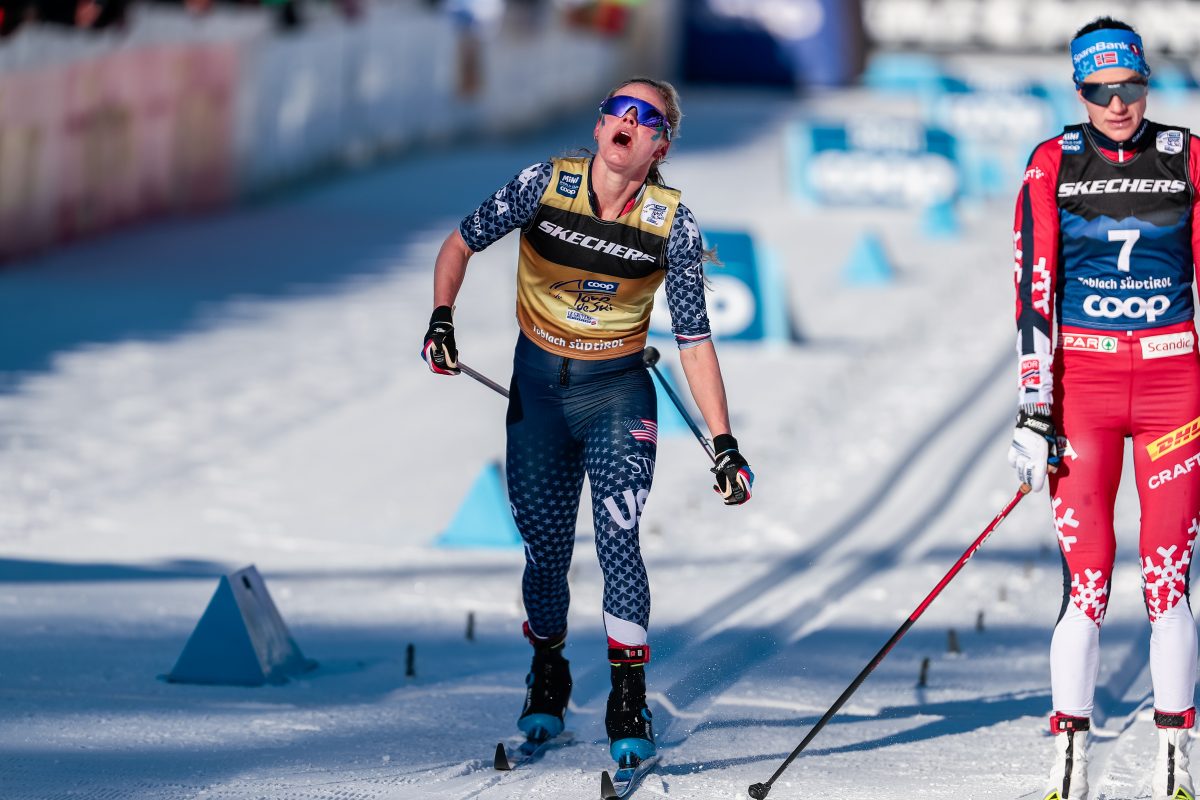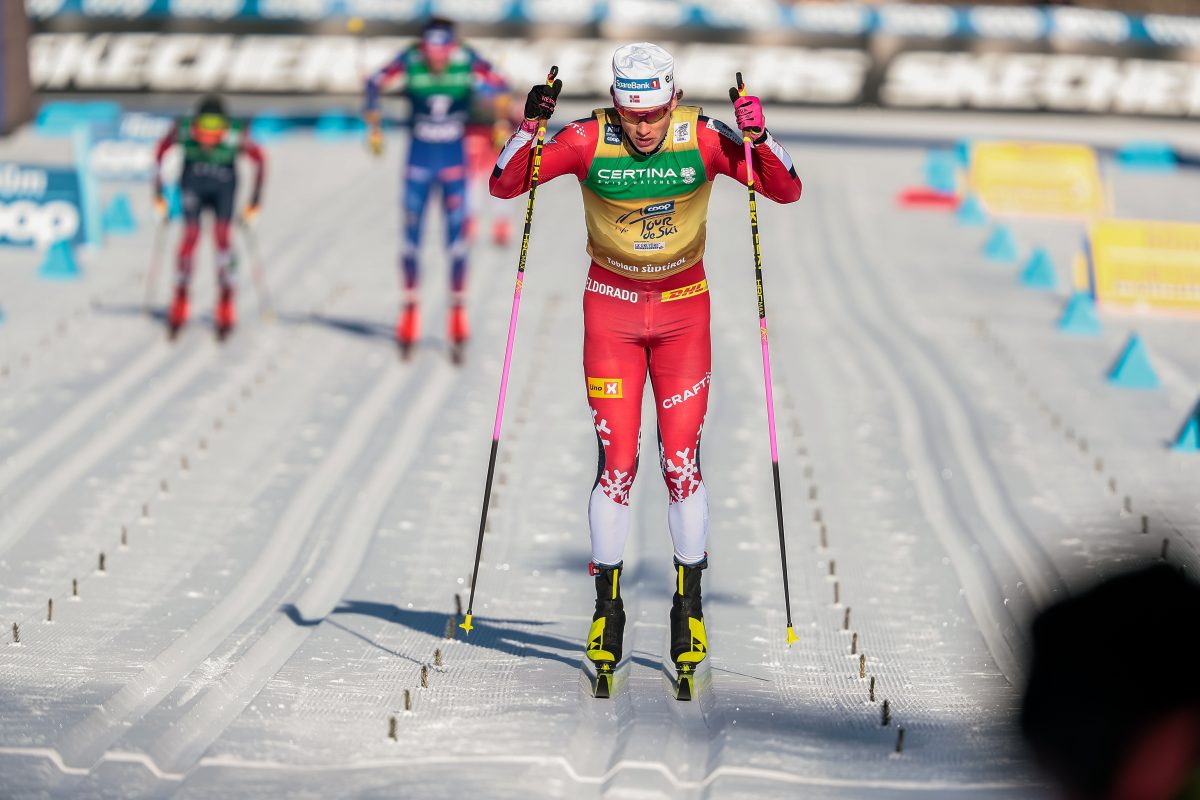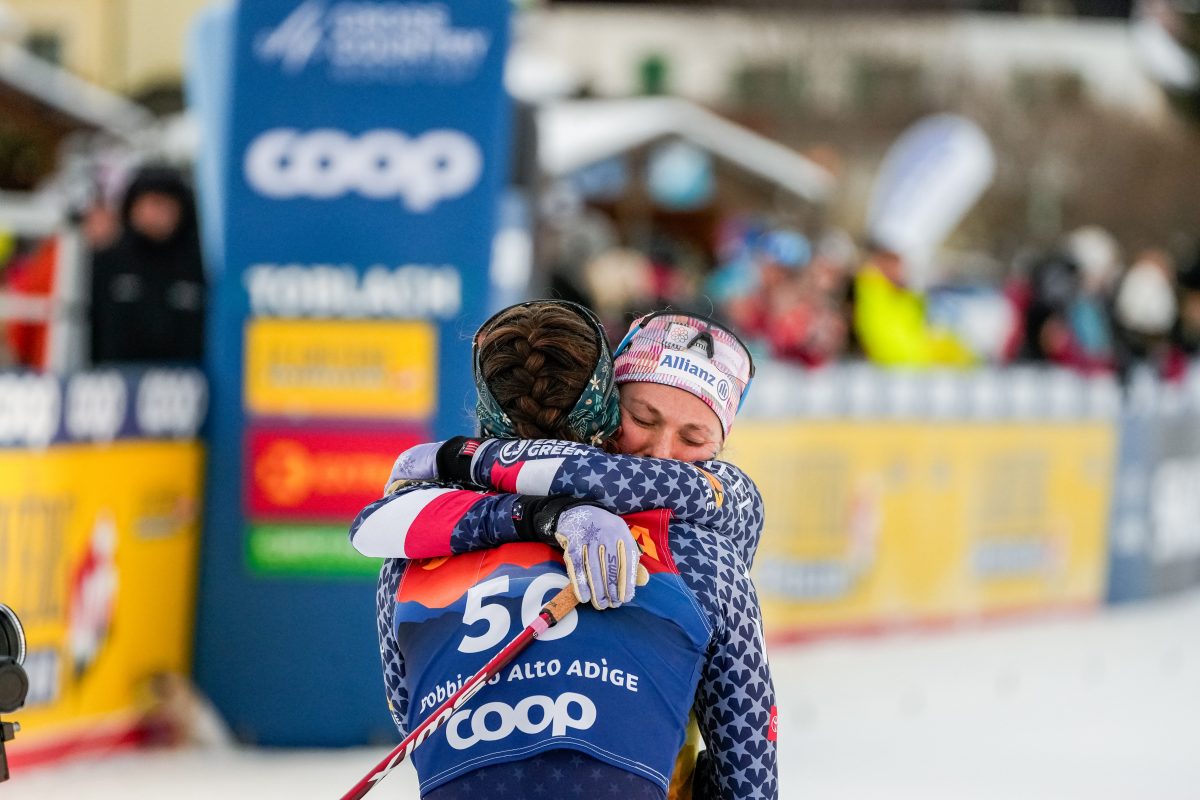Observations from the International stage
John Aalberg is an FIS Technical Delegate and Homologation Inspector. In
addition to being cross country venue director for Soldier Hollow during the
2002 Olympics, John has also been a technical delegate for many other international
races, including the 2003 World Championships. For more information or requests
for lectures, presentations of planning and preparation phases, or the "behind
the scenes" race operations, contact John Aalberg at kjaalberg@aol.com
Since 1998 I have had the opportunity to closely participate in and observe
the "inner circle" of large international Cross-Country skiing events
as well as the process of guiding the development of the sport at this level.
During the last three World Ski Championships and the last two Olympic Games,
and the period in between, I have been either an integrated part of the event
management, or a participant and observer in the decision and planning process
of the program for these events. In the time period from the 1998 Olympic Winter
Games in Nagano through the 2003 World Ski Championship in Val Di Fiemme, Italy,
the sport has been through huge changes and difficult issues.
Although some are saying that the recent years’ doping scandals have been
detrimental for the sport, I believe the sport is overcoming this by renewing
itself faster than any other winter sport. The small group of individuals that
are discussing and implementing changes to the sport are listening to the future
generation, the wishes of media and spectators, but is not forgetting its own
history and culture. The sport is therefore gaining interest and popularity
in new groups, and at the same time keeping its old supporters. However, the
teams, coaches and athletes are faced with big choices and challenges, since
the new events and formats require an array of specialized skills and strengths,
almost impossible to fully master at all levels for any individual skier.
The sport is rapidly changing at several levels, foremost in event formats,
ski courses and stadium layouts, and athlete specialization.
Event formats
In 1998, all four individual Olympic events were interval start races (including
the two-day pursuit race). Today, the proposal for the next World Ski Championship
in 2005 includes one (1) individual interval start race, the other three races
are mass-start or sprint-start races. The first Sprint race in a World Championship
or Olympic Games was introduced in Lahti in 2001, the first mass-start race
in Salt Lake City in 2002, and the first "continuous" pursuit race
(perhaps called skiathlom in the future) in Val Di Fiemme in 2003. In addition,
the current proposal for 2005 program also includes a new team event, the two-person
Sprint relay, in addition to the current four-person traditional relay.
The future Championship program may look like:
| Event | Men | Women |
| Interval start: |
15 km |
10 km |
| Mass-start: | 50 km |
30 km |
| Pursuit (skiathlom): |
15 + 15 km |
7.5 + 7.5 km |
| Sprint: | 1.5 km |
1.0 km |
| Sprint Relay (2): |
1.5 km x 6-8 |
1.0 – 1.5 km x 6-8 |
| Team Relay (4): |
4 x 10 km |
4 x 5 km |
The techniques for these races are also being proposed to alter between Championships,
such that the interval and mass-start races are always held in different techniques
(i.e. 10/15 km free & 30/50 classical in 2005 WSC, then 10/15 km classical
& 30/50 free in 2006 Olympic Games). The Sprint and Sprint Relay events
are also being proposed to alter between free technique and classical technique
(i.e. Sprint in free and Sprint Relay in classical in 2005 WSC, then Sprint
in classical and Sprint Relay in free in 2006 Olympic Games). It is a strong
wish from most nations to create an even distribution of classical and free
technique races (50/50) to make sure the sport does not loose the traditional
classical technique.
Ski courses and stadium layouts
The recent rapid change in Championship event format is implemented to make
the competitions easier to understand for spectators and media, as well as more
entertaining to watch. To go with this, the length of the courses has decreased
and the number of laps increased. This way the skiers come through the stadium
more often, creating a better event to watch for spectators and press. Instead
of skiing on courses 10 – 15 km long, and being out of spectators’
and press’ sight for over 30 minutes, the skiers now compete on loops
from 2.5 to 5 km long, coming through or near the stadium every 6 – 12
minutes.
Due to the preference of mass-start or sprint-start events, the stadium and
courses need to be wider than before, for example up to 10 – 12 m (30 – 36 feet)
for the first and last kilometer of the course. The stadium setup for the newest
event, the skiathlom, requires even more space and equipment, although something
most organizers on the international circuit have easily adapted to.
Athlete specialization
Observing the development and the results at Championships and World Cup races,
it is clear that the sport is going towards athlete specialization. The new
formats also require different and new skills, it being quite different skiing
side by side in a large group of equally good skiers than one by one against
the clock. It is now rare or exceptional to see fast Sprint skiers do well in
longer races, as well as medium or long distance skiers ever qualify for the
Sprint finals. It is also clear that many of the World class skiers are better
in one technique, although everyone realize that training in both techniques
gives better overall physical improvement.
The new mass-start format events invite to an increased importance of skills
such as tactics (being smart with positioning and drafting), ski agility (skiing
well in tight or difficult spots, avoiding crashes), power (for short bursts
while passing), lactate tolerance (for rapid speed changes along the way) and
speed (for sprinting at the end). Overall physical capacity is still the most
important, but it will no longer be such a dominant factor. Physical characteristics
also seem to play a role, especially in Sprint races. It is impressive to see
the size (height) and power of some of the best men’s sprinters. This
is not observed in the women’s field yet.
By looking at the new Championship program, it can now be equally divided into
short, medium and long-distance events – two sprint events for the short
distance skier, two medium distance events (10/15 km and 4 x 5/10 Relay) and
two long distance events (skiathlom and 30/50 km). Most national elite skiers
and teams can now evaluate their skills and strengths and start pondering specialization
and training methods.
As mentioned earlier, the goal for the sport is to continue to cater to both
techniques, and designing a Championship program that gives equal opportunities
to win medals in both techniques. Some athletes, due to their build and strength
will always be better in one over the other technique. However, many of us hope
that the International focus and support for both techniques will also make
kids, youth and junior skiers learn to ski equally well in all skiing techniques.
In summary, comments from athletes, coaches, spectators, press and TV producers
at the International level bear well for the future of Cross-Country ski racing.
The display of action, skills, excitement and joy at last month’s World
Championship created hope and recognition for the sport. The increased emphasis
on ant-doping and blood control is giving measured improvements in regard to
the average values measured among the elite skiers. The "playing field"
is becoming more fair, as well as more fun!



